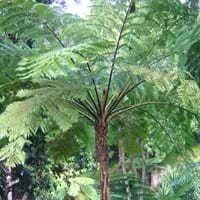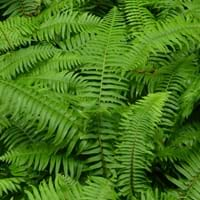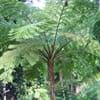Life Span
Perennial
Perennial
Origin
Australia
Australia
Types
Cyathea cooperi, Dicksonia antarctica
Polystichum solitarium
Number of Varieties
Not Available
Habitat
Shady Edge, Woodland Garden Dappled Shade
Shady Edge, Woodland Garden Dappled Shade
USDA Hardiness Zone
10-11
9-11
Sunset Zone
H1, H2, 15, 16, 17, 18, 19, 20, 21, 22, 23, 24
H1, H2
Habit
Upright/Erect
Arching/Fountain-shaped
Flower Color
Not Available
Not Available
Flower Color Modifier
Bicolor
Bicolor
Fruit Color
Not Available
Not Available
Leaf Color in Spring
Light Green, Dark Green
Green, Dark Green
Leaf Color in Summer
Light Green, Dark Green
Green, Dark Green
Leaf Color in Fall
Light Green, Dark Green
Green, Dark Green
Leaf Color in Winter
Light Green, Dark Green
Green, Dark Green
Leaf Shape
Fern like
Saw-tooth like
Plant Season
Spring, Summer, Fall, Winter
Spring, Summer, Fall, Winter
Sunlight
Full Sun
Full Shade, Partial shade
Type of Soil
Clay, Loam, Sand
Loam, Sand
The pH of Soil
Acidic, Neutral, Alkaline
Acidic, Neutral, Alkaline
Soil Drainage
Average
Average
Bloom Time
Not Available
All year
Tolerances
Wet Site, Salt
Drought, Dry Conditions, Light Frost, Shade areas, Variety of soil types
Where to Plant?
Ground
Ground
How to Plant?
Spores
Divison, From Rhizomes, Spores
Plant Maintenance
Medium
Low
Watering Requirements
Average Water Needs, Do Not over Water, Requires regular watering
when new, water every week
In Summer
Lots of watering
Lots of watering
In Spring
Moderate
Moderate
In Winter
Average Water
Average Water
Soil pH
Acidic, Neutral, Alkaline
Acidic, Neutral, Alkaline
Soil Type
Clay, Loam, Sand
Loam, Sand
Soil Drainage Capacity
Average
Average
Sun Exposure
Full Sun
Full Shade, Partial shade
Pruning
Remove damaged leaves, Remove dead branches, Remove dead leaves, Remove dead or diseased plant parts, Remove deadheads
Remove damaged leaves, Remove dead branches, Remove dead leaves
Fertilizers
10-10-10, Fertilize in early spring, fertilize in fall, fertilize in summer, General purpose liquid or granular fertilizer
All-Purpose Liquid Fertilizer
Pests and Diseases
Red blotch
Pests and diseases free
Plant Tolerance
Salt, Wet Site
Drought, Dry Conditions, Light Frost, Shade areas, Variety of soil types
Flower Petal Number
Single
Single
Foliage Texture
Bold
Coarse
Foliage Sheen
Matte
Glossy
Attracts
Birds, Butterflies, Hummingbirds
Birds, Butterflies, Hummingbirds
Allergy
Carcinogenic, Thiaminase
Not Available
Aesthetic Uses
Showy Purposes
Cottage Garden, Showy Purposes
Beauty Benefits
Not Available
Good for skin
Environmental Uses
Air purification, soil stabilisation
Air purification, Food for animals
Medicinal Uses
Astringent
Poultice, Sore throat, Tonsillitis
Part of Plant Used
Leaves, Stem, Tree trunks
Leaves, Root, Stem
Other Uses
Showy Purposes
Used as Ornamental plant, Used for its medicinal properties
Used As Indoor Plant
No
No
Used As Outdoor Plant
Yes
Yes
Garden Design
Container, Feature Plant, Tropical
Bedding Plant, Container, Feature Plant, Houseplant, Tropical, Water Gardens
Botanical Name
CYATHEA australis
Polystichum munitum
Common Name
Rough Tree Fern
Swordfern, western swordfern
In Hindi
Australian Tree Fern
Swordfern
In German
Australian Baumfarn
Sword Fern
In French
Australian Arbre Fern
Epée Fern
In Spanish
Helecho de árbol australiano
helecho espada
In Greek
Αυστραλιανή Tree Fern
ξίφος φτέρη
In Portuguese
Australian Tree Fern
espada Fern
In Polish
Australijski Drzewo paproci
Miecz Fern
In Latin
Fern tree Australia
Fern gladio
Phylum
Pteridophyta
Pteridophyta
Class
Pteridopsida
Filicopsida
Order
Cyatheales
Polypodiales
Family
Cyatheaceae
Dryopteridaceae
Genus
Cyathea
Polystichum
Clade
Not Available
Not Available
Tribe
Not Available
Not Available
Subfamily
Not Available
Not Available
Number of Species
Not Available
Season and Care of Australian Tree Fern and Swordfern
Season and care of Australian Tree Fern and Swordfern is important to know. While considering everything about Australian Tree Fern and Swordfern Care, growing season is an essential factor. Australian Tree Fern season is Spring, Summer, Fall and Winter and Swordfern season is Spring, Summer, Fall and Winter. The type of soil for Australian Tree Fern is Clay, Loam, Sand and for Swordfern is Loam, Sand while the PH of soil for Australian Tree Fern is Acidic, Neutral, Alkaline and for Swordfern is Acidic, Neutral, Alkaline.
Australian Tree Fern and Swordfern Physical Information
Australian Tree Fern and Swordfern physical information is very important for comparison. Australian Tree Fern height is 460.00 cm and width 30.00 cm whereas Swordfern height is 120.00 cm and width 60.00 cm. The color specification of Australian Tree Fern and Swordfern are as follows:
Australian Tree Fern flower color: Not Available
Australian Tree Fern leaf color: Light Green and Dark Green
Swordfern flower color: Not Available
- Swordfern leaf color: Green and Dark Green
Care of Australian Tree Fern and Swordfern
Care of Australian Tree Fern and Swordfern include pruning, fertilizers, watering etc. Australian Tree Fern pruning is done Remove damaged leaves, Remove dead branches, Remove dead leaves, Remove dead or diseased plant parts and Remove deadheads and Swordfern pruning is done Remove damaged leaves, Remove dead branches and Remove dead leaves. In summer Australian Tree Fern needs Lots of watering and in winter, it needs Average Water. Whereas, in summer Swordfern needs Lots of watering and in winter, it needs Average Water.





